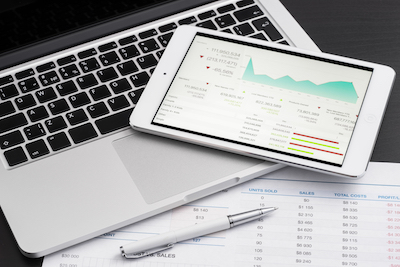People invest in a digital piano for a variety of reasons. One of the reasons we love them is because of the many built-in tools available for learning and making music.
One of the questions we’re frequently asked is: How do you record actual sound of your keyboard onto your computer? There really isn’t a difference between Mac or PC; what software packages you prefer is up to you. What is important is to understand the connection process and how to make it a reality. 
There is a difference between a MIDI connection from your keyboard and the process used to record sound. If you want to record the actual sound, a MIDI connection will not do the job. A MIDI interface will only transmit your performance data to software on your computer. This includes things like which notes you have played, or how loudly you play your music.
If you want to record your actual sound – the music you produce by playing the keyboard – you need to connect the line out from your keyboard to your Mac or PC.
The way you do that depends on your budget.
The easiest and least expensive way is to connect an audio cable from the audio output on the keyboard to the mic port on the computer. If your computer or iPad doesn’t have a mic port, you can buy an external sound adapter that has a separate headphone and mic port and connect this to your USB port. While not the highest quality way to connect, it is the easiest and gets the job done.
A more cost effective and reasonable quality sound solution is to invest in a linelink, or an out-USB interface that bypasses your existing soundcard and outputs studio quality audio directly to your computer. A y-cable converter allows left and right stereo sound to be sent from your keyboard and produce a higher quality sound to record.
The best approach would be to create a high quality professional recording studio using a professional audio interface. You can find all-in-one home recording studio packages that connect your keyboard to your computer, giving your freedom to record a variety of inputs, from vocal and maybe guitar. Most complete systems will pack everything – audio interface, microphone and headphones all in one box. They all come with their own software packages as well.

